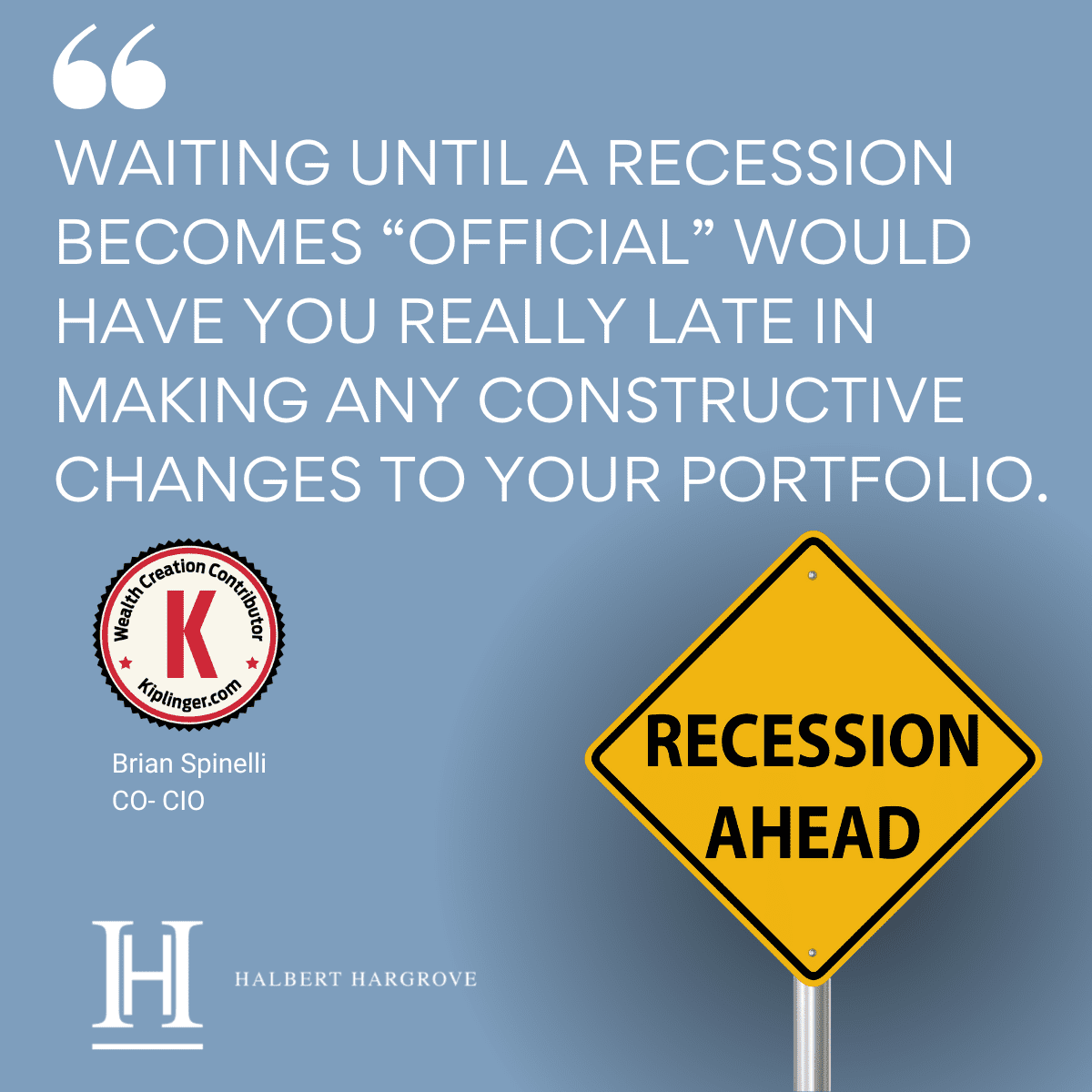Waiting until a recession is ‘official’ could be too late, so consider taking some steps now to set your portfolio up for resiliency.
By Brian Spinelli, CFP®, AIF®, Co-Chief Investment Officer as featured in Kiplinger
If we end up seeing a recession in the U.S. later in 2023 or in 2024, it may go down as one of the most widely anticipated in recent history. Investors and markets tend to react to a recession well in advance of an official announcement.
With this uncertainty hanging over our heads, it’s common to wonder how to build a recession-proof portfolio. You should keep in mind that waiting until a recession becomes “official” would have you really late in making any constructive changes to your portfolio. So if you’re considering taking steps, don’t delay.
Begin by Taking Stock of Where You Are on Your Life Path
If you are investing money and taking on any level of risk to get a higher rate of return than cash, you likely won’t be fully immune to recessionary impacts.
But there are ways to set your portfolio up for greater resiliency heading into a recession. Before you make any changes, it’s very important for you to consider where you are at in your financial life. For example, are you regularly adding to an investment account, in what our firm calls the build and grow phase? If you’re still earning an income, and saving and investing for the future, declines in investment markets are a welcomed entry point. Consider this like a sale, because stocks are being sold at lower prices, and you can add more shares to your portfolio at a discount.
If you are being forced to sell assets during market downturns, you may want to consider having diversifiers in your portfolio to turn to so you can let other parts of the portfolio take the time to recover.
Setting Your Portfolio Up for Resiliency
First and foremost, diversify your portfolio. What happened so swiftly in mid-March with certain banks in the U.S. and abroad collapsing served as a very quick reminder of the risks of concentrating your assets in any specific industry or asset class. You should invest in a variety of asset classes such as stocks, bonds, real estate and alternatives to spread your risk over many areas. Do not rule out investments that are not publicly traded — this is an area we value in portfolio diversification.


